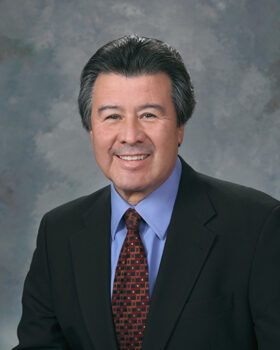
Editor’s note: This column originally appeared in the Albuquerque Journal on Aug. 28.
As Albuquerque’s children enter their third school year since the COVID-19 pandemic first shuttered schools across the country, there are two numbers parents and community leaders need to keep in mind: 50 and 137.
What does 137 signify? Most Albuquerque parents are unaware that a single, 137-page document will be the key factor over whether our school board members are able to bring about the dramatic change necessary to pull us from rock bottom. This document is the collective bargaining agreement negotiated between the district and the Albuquerque Teachers Federation, setting the rules for everything from salaries and sick leave to the length of the school day and what’s taught in classrooms.
Albuquerque’s teachers have taken on a heroic venture over the past two years, from 13 months of school closures that forced them to pivot to a virtual environment to helping students re-acclimate to in-person schooling despite issues with socialization and mental health wrought by the pandemic. They deserve the boost of pay they received this year and significant support to ease the burden of these challenges. But the teachers and administrators I speak with regularly are concerned about the lack of learning taking place in our public schools and are frustrated when they learn the specifics of the draconian contract.
What is surprising is just how aggressive the now-approved CBA will be in curtailing necessary change. If 137 pages sounds like a lot, well, that’s because it is. Looking at other major cities across the southwest, Austin’s CBA clocks in at 60 pages, Fort Worth at 58, Mesa (Phoenix) at 62 and even Rio Rancho at just 31. That’s a whole bunch of extra pages, which should lead us to ask: “What’s going on in Albuquerque?”
The answer is that, contrary to nearly every other CBA across the country, the one for the Albuquerque Federation of Teachers departs the familiar territory of salary scales, lunch duty and preparation periods, instead devoting copious ink to instruction and the ability for schools and classrooms to ignore instructional policy set by the board, in extreme ways that go far beyond empowering teachers to be the leaders of their classrooms.
Rigorous state standards set to give New Mexico’s kids an even playing field when competing against their peers across the country for college and job opportunities? Those can be augmented by any teacher that feels their kids aren’t up for it. District-selected curriculum? No need to follow it. The ability of the school board to make the instructional policy changes we elected them to make? That’s gone, too.
Fifty is the number we know all too well. It’s New Mexico’s rank in public education, according to US World & News Report, Forbes and Education Week. And while the embarrassment that comes from ranking at the very bottom of the country is considerable, the true shame is that it’s representative of thousands of children unable to realize their potential due to the substandard education they’ve received from their public schools. Only one in three APS students are proficient in math and only one in five are proficient in reading – and that was pre COVID-19.
We’re in a crisis. One that we’re responding to not with the aggressive and innovative mandate wielded by our school board when they were swept into office on a tide of frustration at the lack of change, but instead with business as usual.
Albuquerque should look to Mississippi for insight into what’s possible. In 2019, community and elected leaders came together, angry and frustrated at their continued place at the bottom of national rankings. They identified literacy instruction as a primary barrier and worked diligently to support teachers in implementing a phonics-based method often called the “science of reading.”
It worked, in what’s now being referred to as the Mississippi Miracle. The results speak for themselves: once the bottom of the nation, Mississippi has climbed past 15 states and leaders there point to the reading curriculum as the primary reason. We should be replicating this success instead of banning it, given that the approved CBA will curtail any capacity for the board to implement district-wide curriculum changes.
The time for a New Mexico miracle is now, and it starts here in Albuquerque. Anyone standing in the way of progress should take note and we, as a community, should hold our educational leaders accountable for a lack of progress. Our children deserve that much.







